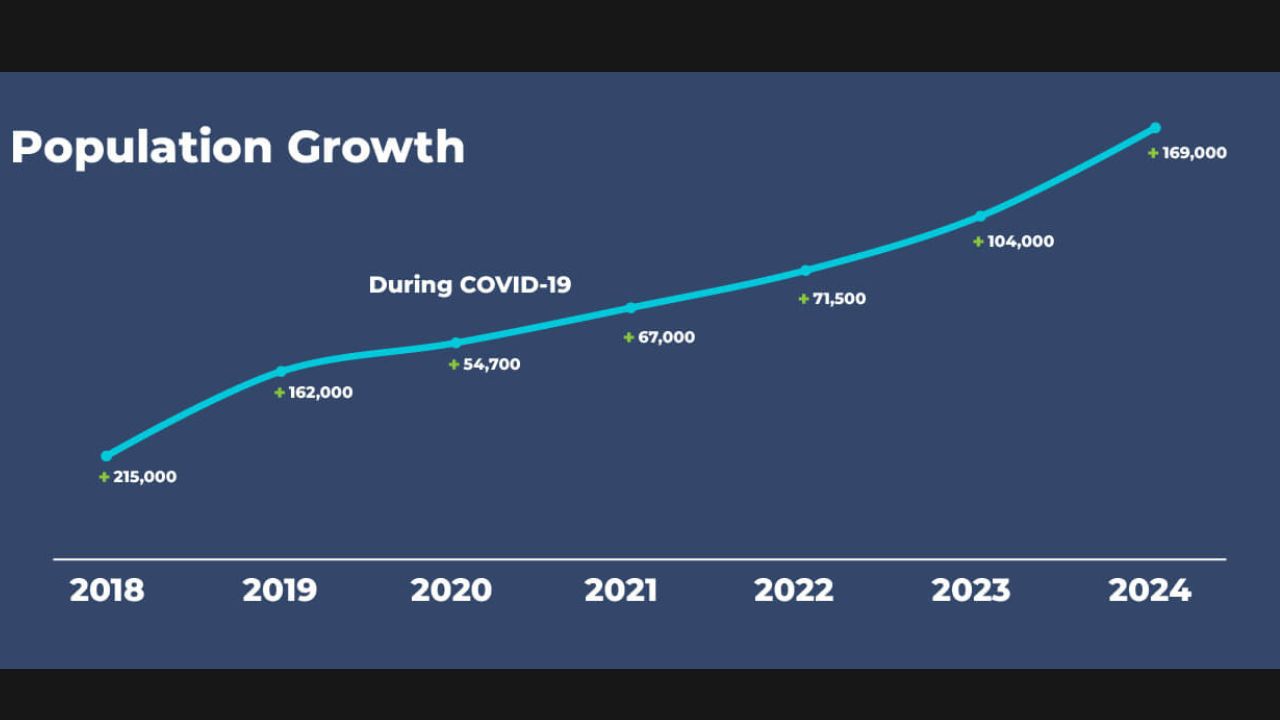
Dubai population growth is driving major changes in the city’s urban landscape, prompting rapid development of infrastructure, housing, and public services. As more residents settle in the emirate, Dubai is expanding outward with smart city planning, sustainable communities, and improved transport networks. This growth is reshaping the city’s skyline while positioning Dubai as a leading model for future-ready urban development in the region.
Dubai Population Growth and Urban Impact
Dubai’s rapid population growth has transformed it into a global metropolis. From a modest population of approximately 20,000 in 1950, Dubai’s population has surged to over 3.9 million in 2025. This exponential growth has significant implications for urban development, infrastructure, and real estate investment.
Population Growth Trends
Historical Growth
Dubai’s population has experienced remarkable growth over the past few decades:
- 1950: Approximately 20,000 residents.
- 1975: Around 183,000 residents.
- 2015: Approximately 2 million residents.
- 2025: Estimated at 3.9 million residents.
This growth represents a nearly 20-fold increase over 50 years.
Recent Trends
In recent years, Dubai’s population growth has continued at a steady pace:
- 2022: 3.5 million residents.
- 2023: 3.6 million residents.
- 2024: 3.7 million residents.
- 2025: 3.9 million residents.
This growth is driven by factors such as economic opportunities, a favorable business environment, and government initiatives to attract global talent.
Urban Impact
Infrastructure Development
The surge in population has necessitated significant infrastructure development:
- Transportation: Expansion of the Dubai Metro, road networks, and the introduction of innovative projects like “The Spine,” a 40-mile sustainable motorway featuring solar-powered robo-trams.
- Housing: Development of new residential areas such as Dubai South, Jumeirah Village Circle, and Dubai Hills Estate to accommodate the growing population.
Real Estate Market
The Dubai real estate market has experienced a boom, with property prices approaching pre-2008 levels. Average property prices have surged by 75% since February 2021, driven by increased demand from both residents and investors.
Environmental Considerations
Rapid urbanization has also raised environmental concerns:
- Water Scarcity: Dubai relies heavily on desalination for its water supply, leading to high energy consumption.
- Sustainability Efforts: Initiatives like The Sustainable City aim to promote eco-friendly living through renewable energy and waste recycling.
Future Projections
Dubai’s population is projected to reach 5.8 million by 2040, nearly doubling the current figure. This anticipated growth underscores the need for continued investment in infrastructure, housing, and sustainable urban planning.
Investment Opportunities
For investors, Dubai population growth presents significant opportunities:
- Residential Real Estate: High demand for housing in emerging areas offers potential for strong returns.
- Commercial Real Estate: Expansion of business districts to support the growing economy.
- Sustainable Projects: Investment in eco-friendly developments aligns with global trends and government priorities.
Platforms like Valorisimo provide access to a range of real estate investment opportunities in Dubai and the UAE.
Also search for : Dubai Real Estate Market Analysis
Dubai population growth is a testament to its dynamic economy and global appeal. While this growth presents challenges in terms of infrastructure and sustainability, it also offers substantial opportunities for investors and developers. Strategic planning and investment will be key to harnessing the potential of Dubai’s expanding population.
